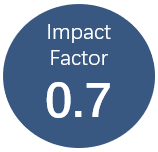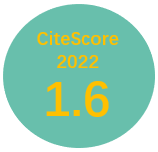Highways to heaven: Infrastructure determinants and trends in Latin America and the Caribbean
Vol 1, Issue 2, 2017
VIEWS - 952 (Abstract) 453 (PDF)
Abstract
Keywords
Full Text:
PDFReferences
Arslanalp S and Tsuda T (2014). “Tracking global demand for emerging market sovereign debt”. IMF Working Paper No. 14/39. Washington, DC, USA: International Monetary Fund.
Bitran E, Nieto-Parra S and Robledo JS (2013). “Opening the black box of contract renegotiations: An analysis of road concessions in Chile, Colombia and Peru”. OECD Working Paper No. 317. Paris, France: Organisation for Economic Co-operation and Development.
Bloomgarden D and Blumenfeld D (2013). “The institutional environment for public-private partnerships: The case of Mexico and Brazil”. In: de Vries P and Yehoue EB (eds.). The Routledge Companion to Public-Private Partnerships. Oxon, UK: Routledge.
Calderón C and Servén L (2010). “Infrastructure in Latin America”. World Bank Policy Research Working Paper No. 5317. Washington, DC, USA: World Bank.
Cebotari A, Davis J, Lusinyan L, et al. (2008). “Fiscal risks: Sources, disclosure and management”. Washington, DC, USA: International Monetary Fund.
Celasun O, Grigoli F, Honjo K, et al. (2015). “Fiscal policy in Latin America: Lessons and legacies of the global financial crisis”. IMF Staff Discussion Note 15/06. Washington, DC, USA: International Monetary Fund.
Chambliss S, Miller J, Façanha C, et al. (2013). “The impact of stringent fuel and vehicle standards on premature mortality and emissions”. ICCT’S Global Transportation Health and Climate Roadmap Series. Washington, DC, USA: The International Council on Clean Transport.
Economist Intelligence Unit (2012). “Evaluating the Environment for Public–Private Partnerships in Latin America and the Caribbean”. The 2012 Infrascope. New York, NY, USA: Economic Intelligence Unit.
_____ (2014). “Evaluating the Environment for Public–Private Partnerships in Latin America and the Caribbean”. The 2014 Infrascope. New York, NY, USA: Economist Intelligence Unit.
Ehlers T (2014). “Understanding the challenges for infrastructure finance”. BIS Working Paper No. 459. Basel, Switzerland: Bank for International Settlements.
Ehrhardt D and Irwin T (2004). “Avoiding customer and taxpayer bailouts in private infrastructure projects”. World Bank Policy Research Working Paper No. 3274. Washington, DC, USA: World Bank.
Engel E, Fischer R and Galetovic A (2014). “Renegotiation in public–private partnerships: Theory and evidence”. Discussion Paper No. 2014–17. International Transport Forum. Washington, DC, USA: World Bank.
Eyraud L, Wane AA, Zhang C, et al. (2011). “Who is going green and why? Trends and determinants of green investment”. IMF Working Paper No. 11/296. Washington, DC, USA: International Monetary Fund.
Farquharson E, Torres de Mästle C, Yescombe ER, et al. (2011). How to engage with the private sector in public– private partnerships in emerging markets. Washington, DC, USA: World Bank.
Frischtak C and Davies K (2014). “O investimento privado em infraestrutura e seu financiamento”(Portuguese) [Private investment in infrastructure and its financing]. In: Castelar Pinheiro A and Frischtak CR (eds.). Gargalos e Soluçoes na Infraestrutura de Transportes. Rio de Janeiro, Brazil: Editora FGV.
Funke K, Irwin T and Rial I (2013). “Budgeting and reporting for public–private partnerships”. Discussion Paper No. 2013-7, International Transport Forum. Washington, DC, USA: World Bank.
Garcia Escribano M, Góes C and Karpowicz I (2015). “Filling the gap: Infrastructure investment in Brazil”. IMF Working Paper 15/180. Washington, DC, USA: International Monetary Fund.
Góes C (2016). “Institutions and growth: A GMM/IV panel VAR approach”. Economics Letters, 138: 85–91. doi: 10.1016/j.econlet.2015.11.024.
Guasch JL (2004), Granting and renegotiating infrastructure concessions: Doing it right. WBI Development Studies 28816. Washington, DC, USA: World Bank.
International Monetary Fund (2015). “Making public investment more efficient”. IMF Policy Papers. Washington, DC, USA: International Monetary Fund.
Organisation for Economic Co-operation and Development (2011). Strategic transport infrastructure needs to 2030. Paris, France: OECD Publications.
______ (2015). “International freight and CO2 emissions to 2050”. ITF transport outlook 2015. Paris, France: OECD Publications. doi: 10.1787/9789282107782-en.
Perrotti D and Sánchez R (2011). La brecha de infraestructura en América Latina y el Caribe. Santiago, Chile: Comisión Económica para América Latina y El Caribe.
Quintero JD (2012). “Principles, practices and challenges for green infrastructure projects in Latin America”. IDB Discussion Paper, DP-250. Washington, DC, USA: Inter-American Development Bank.
World Economic Forum (2013). “The green investment report. The ways and means to unlock private finance for green growth”. Geneva, Switzerland: World Economic Forum.
World Bank Institute (2011). “Best practices in public–private partnerships financing in Latin America”. Washington, DC, USA: World Bank Institute.
World Bank Institute (2012). “Public-private partnerships: Reference guide version 1.0.”. Washington, DC, USA: World Bank.
DOI: https://doi.org/10.24294/jipd.v1i2.66
Refbacks
- There are currently no refbacks.
Copyright (c) 2017 Valerie Cerra, Alfredo Cuevas, Carlos Góes, Izabela Karpowicz, Troy Matheson, Issouf Samake, Svetlana Vtyurina

This work is licensed under a Creative Commons Attribution-NonCommercial 4.0 International License.

This site is licensed under a Creative Commons Attribution 4.0 International License.










